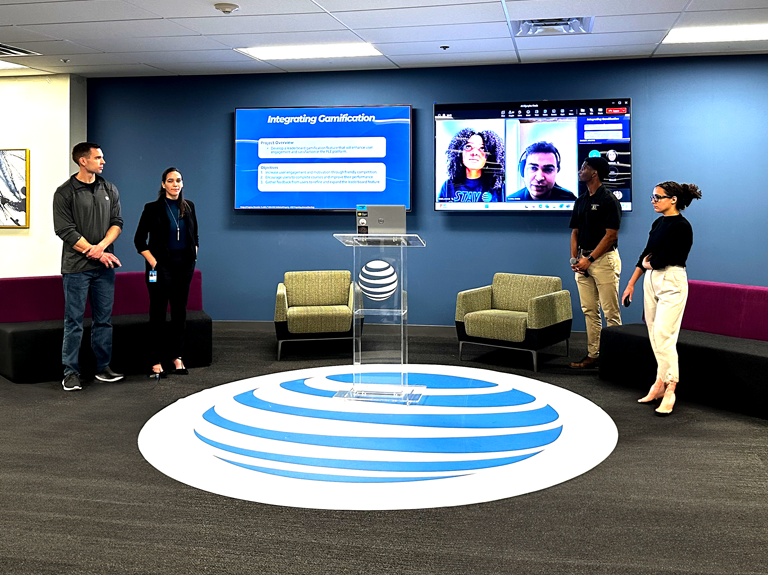AT&T Labs makes industry-first 5G RedCap data connection in the U.S. paving the way for next generation 5G IoT devices
Internet of Things has been a buzz word for last decade. But what was once a mere concept is now part of our daily lives.
Think about smart security cameras and alarms, voice-activated sound systems, and other connected appliances at your home, or the smartwatch that you use at the gym. Then there are parking lots with sensors that alert you when a parking space has become available and smart ambulances that allow doctors to monitor and treat patients remotely until they reach the hospital.
AT&T is leading the way in bringing IoT to life. In 2022, we were the first U.S. provider to hit 100 million IoT connected devices. As of 2Q23, we have about 117 million connected devices.
But as we know, technologies are only as good as the connectivity that powers them. Two weeks ago, AT&T hit another US industry first: the first 5G Reduced Capability (RedCap) data call in both our lab and in the field on a live 5G Standalone network. This is critical for the continued growth of IoT.
IoT devices have evolved alongside the development of mobile communication technologies. Each generation has brought improvements in speed, capacity, and functionality, enabling new IoT applications and use cases. 4G was the first wireless cellular generation to introduce mobile network technology specifically designed for Low Power Wide Area (LPWA) IoT with LTE-M.
The IoT market is very broad spanning the simplest sensors to high end routers, each requiring different technologies to meet its demands. LTE-M will continue to support the LPWA use cases, while 5G will support the high complexity use cases. Between these is 5G RedCap, which will support mid-tier IoT use cases. For lower-cost, lower-complexity IoT devices that do not need standard 5G NR but can benefit from higher bandwidth and lower latency capabilities than what LTE-M currently offers, RedCap is the way to go.
RedCap: New 5G flavor for wearables and small form factor IoT devices
RedCap, sometimes referred to as NR Light, is a reduced set of 5G capabilities intended for devices like wearables and low-cost hotspots that have low battery consumption, lower costs and lower bandwidth requirements.
Introduced with 3GPP Release 17, 5G RedCap is designed for devices currently served by LTE CAT-4 but provides equivalent or better in performance with up to 150Mbps theoretical maximum downlink throughput. It helps reduce the complexity, cost and size of 5G devices. It also introduces options to allow devices to operate at lower power levels.
These upgrades will bring 5G to products and applications full-featured 5G technologies are unable to serve like wearable devices such as smartwatches and AR glasses, as well as IoT devices for healthcare, asset tracking, smart home systems, fleet management and more.
Many IoT and consumer wearable devices are space constrained, leaving little room for complex antenna designs. A 5G RedCap core design has a maximum bandwidth of 20MHz with a single carrier, without the requirement to aggregate multiple carriers together. This allows for simpler and smaller antenna designs with one transmitter (1TX) and one or two receivers (1RX or 2RX) unlike the more complex MIMO antenna designs required for full feature 5G NR devices like smartphones.
Working closely with Nokia and MediaTek, AT&T successfully tested 5G RedCap on MediaTek’s RedCap platform connected to the 5G SA network built with Nokia AirScale. AT&T made the first data call on our live network on July 19. This industry first accomplishment in the U.S. will pave the way for 5G RedCap devices expected in the coming years.
Bringing energy efficiency to 5G IoT devices. 5G RedCap also introduces power saving features, similar to those previously available to LPWA LTE-M devices. eDRX gives device manufacturers the ability to control interactions with the network, allowing devices to “sleep” for longer periods of time. This is especially beneficial for IoT devices which may wait for long durations for an event to happen before needing to communicate with the network.
Looking ahead, AT&T is working with the ecosystem for additional advanced 3GPP power saving features for 5G RedCap, including wake up signal (WUS), early paging indication (PEI), PDCCH monitoring adaption and more.
Although it’s called reduced capability, 5G RedCap still takes advantage of 5G network features giving IoT devices enhanced functionality and user experience – all with lower cost and more energy efficiency!
RedCap is yet another pivotal step in 5G’s continued evolution. More importantly, it will expand and revolutionize the 5G device ecosystem.
Buckle up for the next phase of IoT!
HTML Editor Component
*Contents may not have visible height
Read more Technology & Innovation news



